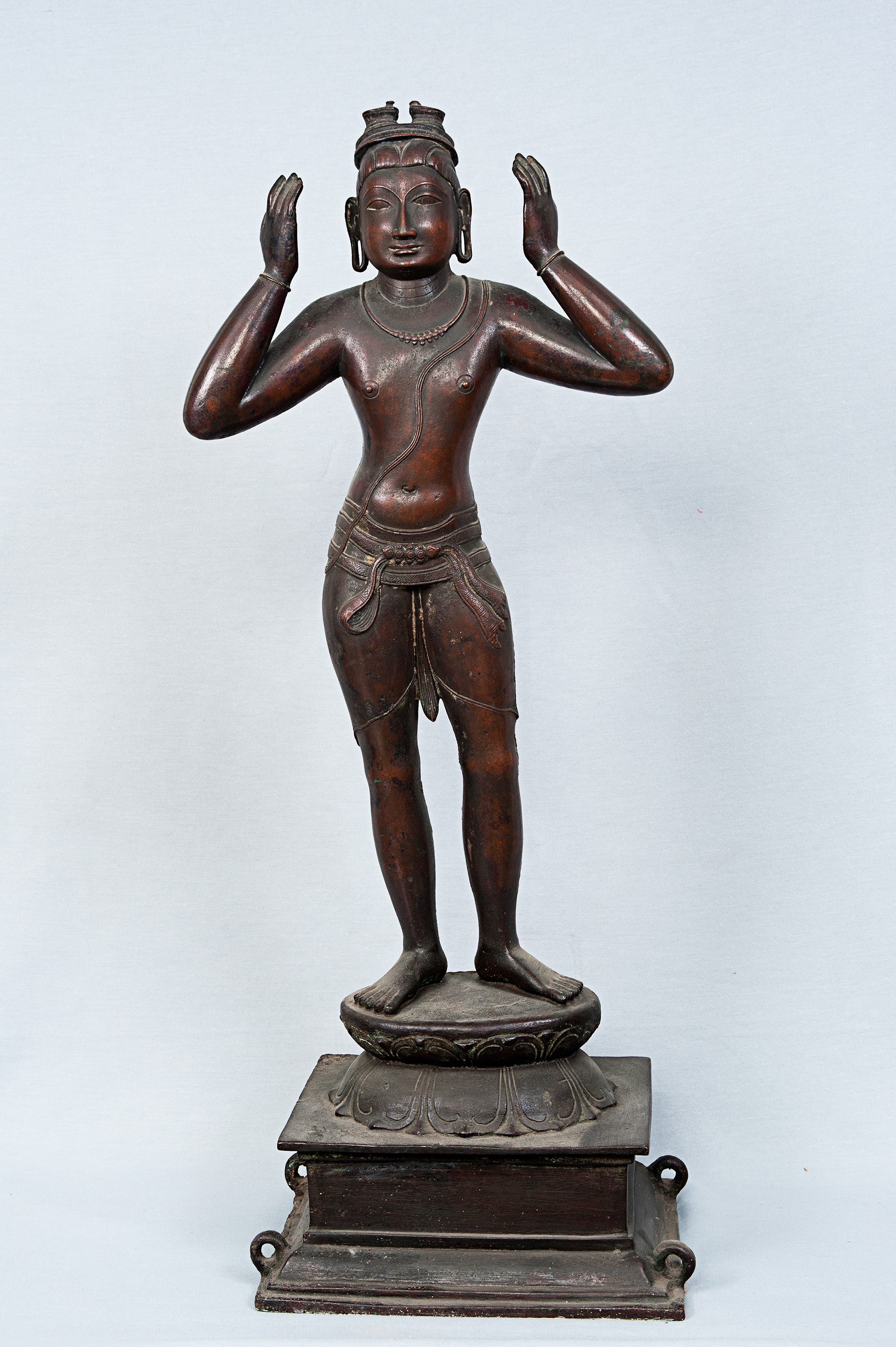Discover, Learn, immerse, Connect
Bharat
This unique sculpture of Bharata belongs to the medieval era and originated in Southern India under the patronage of the Vijayanagara Empire and dates back to the 14th century. It is 75.5cm in height, 31 cm in width and 22.3cm in depth. It is currently on display in the Gallery of Bronzes at the National Museum, New Delhi.
The name “Vijayanagara” literally translates to “City of Victory’. Vijayanagara was both the name of a city as well as an empire which was founded in the 14th century CE by two brothers, Harihara and Bukka Ram. The Vijayanagara empire ended up becoming a dominant power in the Southern peninsula. It stretched from the river Krishna in the north all the way to the southern-most tip of the peninsula. The city of Hampi was the capital of the Vijayanagara Empire. It was abandoned in 1565. The ruins of Hampi were later discovered in the 1800s by Colonel Colin Mackenzie who was an engineer and an antiquarian. It is now recognised as a UNESCO World Heritage Site. The creation of the idol of Bharata can be understood as an indicator of the royal veneration of the Ram avatar of Vishnu. Another avatar of Krishna is Vitthala which was very popular amongst the people of Vijayanagara. The introduction of the worship of the deity Vitthala in Karnataka is an indication of the ways in which the rulers of Vijayanagara drew on different traditions to create an imperial culture.
The cultural significance of the story of Rama (Ramayana) can be indicated by its popularity and by the fact that there exist multiple versions of this story other than Valmiki’s Ramayana. A 12th-century Tamil version by Kamban called the Iramavataram and a Buddhist version called the Dasharatha Jataka in Pali are a few of the versions of the Ramayana. There are also innumerable oral versions of the story. This legend enjoys popularity across other parts of Asia including Tibet, Myanmar, Laos, Cambodia, and Indonesia. All these versions have a different story structure in terms of the beginning and ending alongside characters and events which are also shaped differently.
This unique sculpture of Bharata has been made using the ‘Lost wax’ process. Metal sculptures, both in the South and North India were made using the lost-wax process but those of Southern India were solid while North India produced hollow ones. Most metal sculptures produced in the South were made of an alloy of five metals, copper, silver, gold, tin and lead.
In this particular sculpture, Bharata has his arms bent at the elbow and hands raised to support the sandals of his older brother Rama. Bharata is standing on a lotus pedestal mounted on a rectangular base with four loops on the sides of the base for hooks to be inserted in them to pick up the sculpture. He wears minimal jewellery which points towards the fact that he didn't assume kingship in the absence of Rama and remained simplistic. He is shown wearing a necklace, thin bracelets and a sacred thread called Janeyu across his body. He has elongated ears which is one of the signs of an extraordinary man (mahapurush lakshan). He is also seen wearing a lower garment secured at the waist with an ornamental clasp of floral design and a few ribbons.
This is a rare representation of this deity. The image reflects the unparalleled devotion of the prince of Ayodhya, Bharata, for his older brother Rama who was supposed to be the King but was sent to exile by Bharata’s mother Kaikeyi, as recounted in the Ramayana. Bharata carrying the sandals of his older brother on his head is a symbol of devotion, loyalty, and respect. During Rama’s exile, his brother Bharata was appointed as the king but he refused to accept the throne for himself and decided to wait for his brother, the real king, to come back and assume kingship.
 Government of India
Government of India



